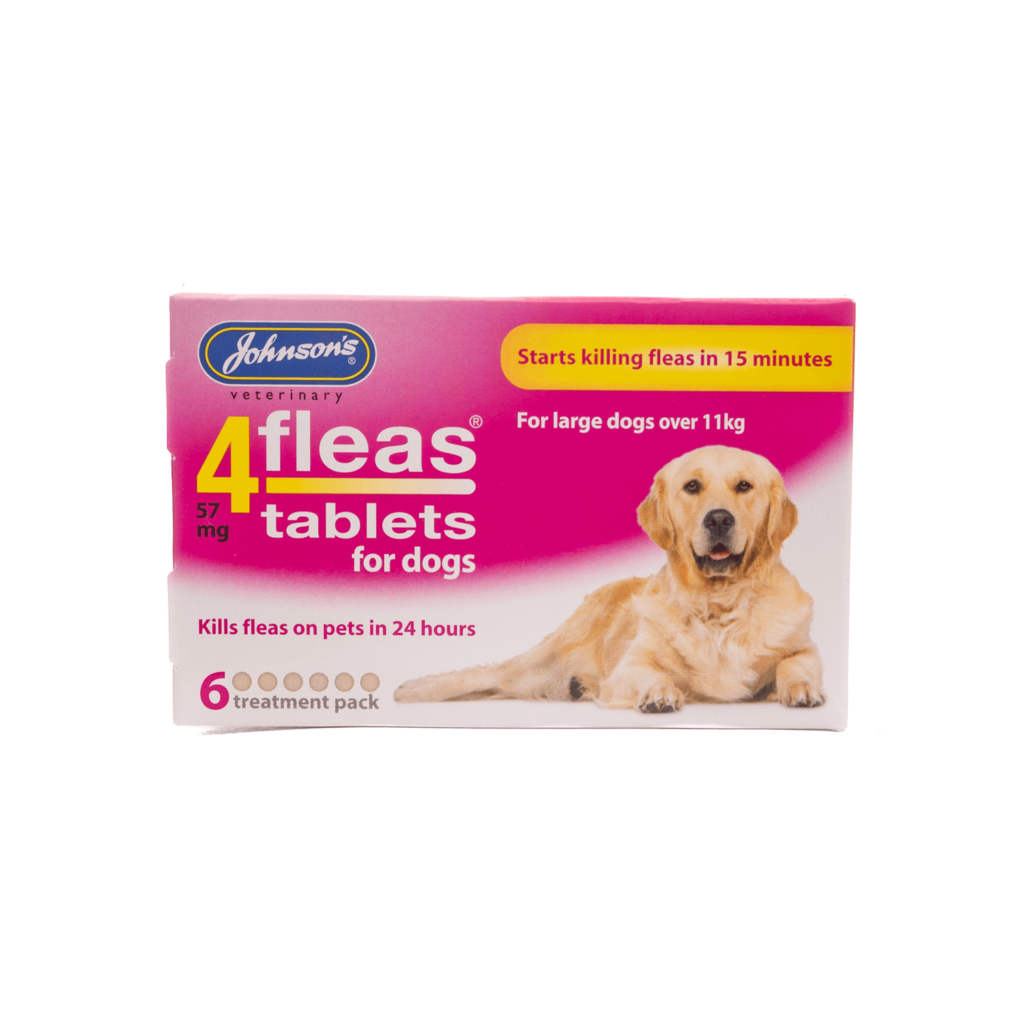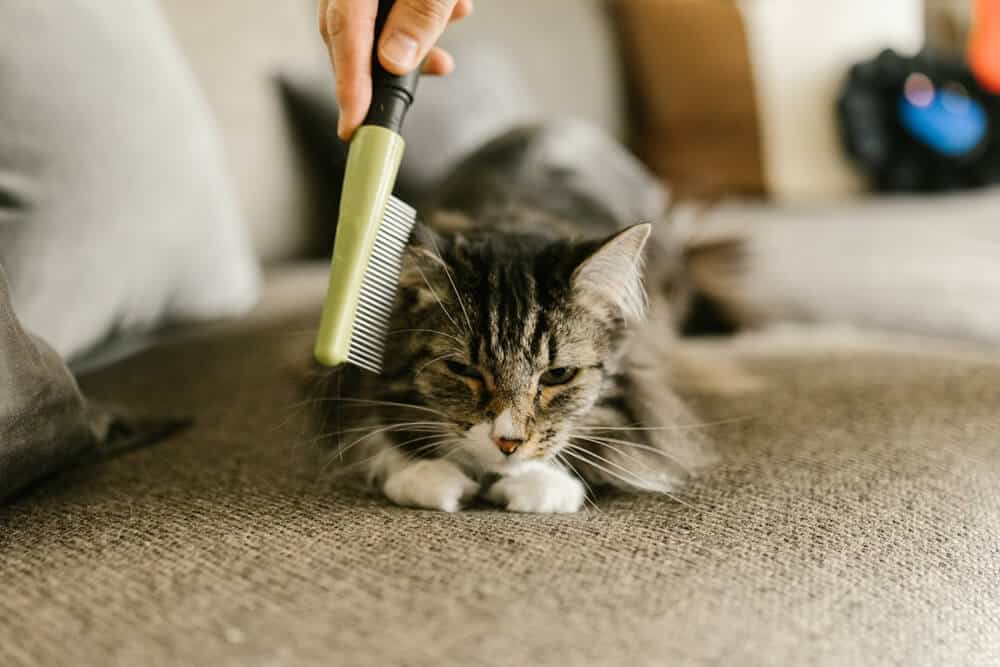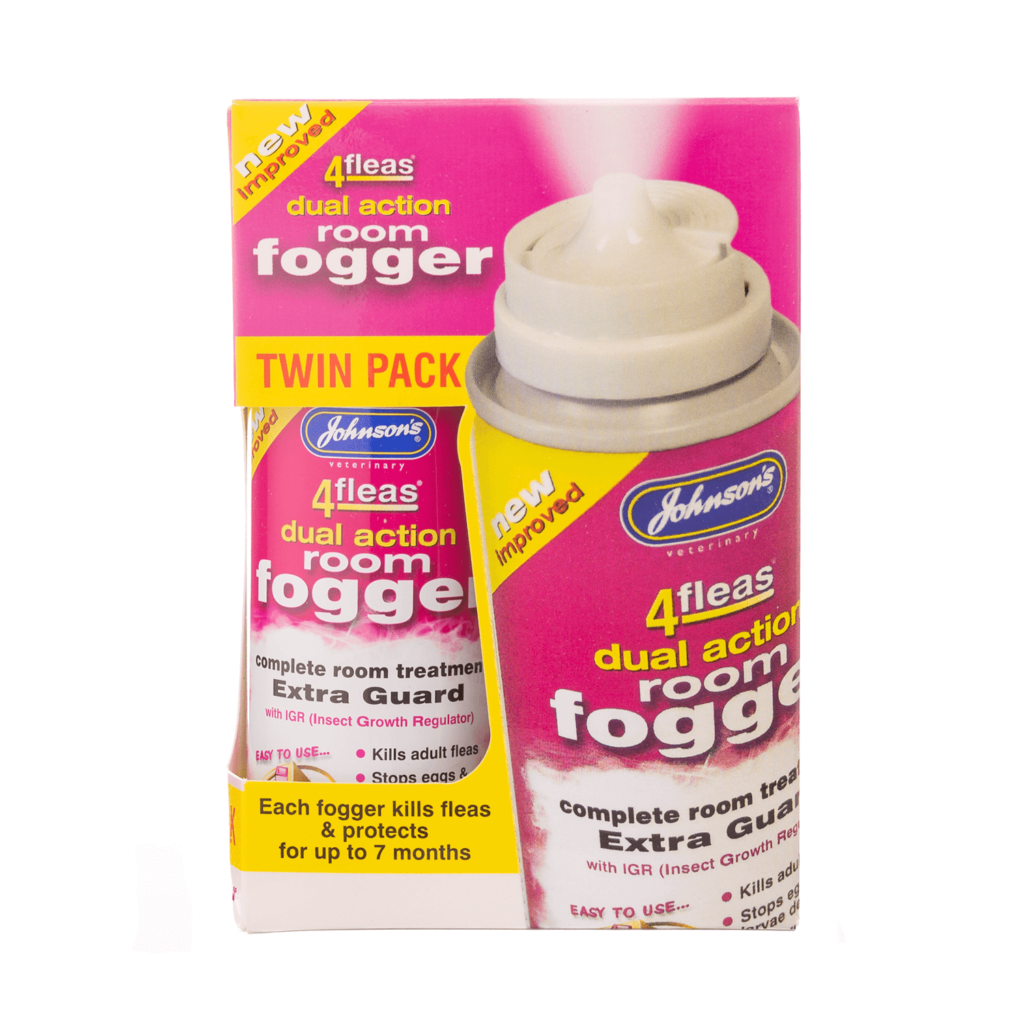When it comes to Flea Prevention, traditionally, flea and tick season stretched from spring to autumn, but nowadays, fleas can pose a year-round threat to your pet’s health. Not only do fleas lead to uncomfortable itching, but they can also cause health-related issues like anaemia and even tapeworms.
As a pet parent, monitoring for fleas on your dog or cat, as well as actively preventing your pet from getting fleas, is crucial to helping your pet live a happy, healthy life. Read on to learn how to protect your pet from fleas and other parasites.

4 Flea Prevention Tips
The best treatment for fleas in dogs and cats is to prevent them in the first place. Here are 4 tips to help protect your pets from fleas.
1. Choose the Right Flea Prevention
By using a flea preventative medication on a regular basis, you can keep fleas, ticks, and other parasites from infecting your dog or cat. These preventatives can be given orally with pills or chews, topically on your dog’s neck, or even worn as a flea collar.
Talk to your vet about the best preventative options for your pup, and how often you’ll need to give your dog the preventative. Most oral and topical preventatives are given monthly, and it’s important to stick to the recommended routine.
2. Check Your Pet Thoroughly Every Day
If your pet does get fleas, the quicker you can start treatment, the better. Check your cat or dog thoroughly every day when they come inside.
If your pet has fleas, you’ll likely be able to see them if you look closely at the exposed parts of your pet’s skin or in areas that fleas like to gather, such as warmer crevices like armpits or the groin area.
Inspect their skin closely for small, reddish-brown dots or red, irritated bites. Fleas are tiny and they can also jump, so watch for any movement along your dog or cat’s skin and fur.
You can also look for “flea dirt” sprinkled in your pet’s fur. “Flea dirt” looks like flakes of black pepper, but it’s really flea excrement and a key sign that your pet is infected. Using a fine-toothed comb to go through your pet’s fur can make it easier to collect flea dirt, eggs, or fleas.
3. Protect All of Your Pets
If you have multiple pets in your home, keep them all on the same flea preventative schedule.
Even if your cat is a primarily indoor cat, if they interact at all with animals that go outside, such as a dog in the house, it’s important to make sure they’re equally protected from parasites.
4. Keep Your Grass Short
If your pets spend lots of time outside in your garden, consider keeping the grass cut short. Fleas and ticks thrive in tall grass, thick brush, and leaves, and keeping these in your garden can expose your pets to parasites.
Likewise, if you’re walking your pet outside, limit how often you walk through thick, grassy patches, especially during peak flea and tick season.
Your Cat or Dog Has Fleas: Now What?
If you’ve discovered fleas on your pet, it’s important to act quickly and start treatment right away. Here are 3 ways to rid your pet and your home of fleas.
1. Give Your Pet Flea Medication
Medication is one of the most common (and most effective) treatment methods for fleas. Oral tablets, like Johnson’s 4fleas tablets, are the fastest way to treat fleas because the medication goes directly into your pet’s bloodstream, stopping fleas at the source.
Johnson’s 4fleas tablets start killing fleas in just 15 minutes. You can give them to your pet by mouth, or you can even mix a tablet with a small portion of your pet’s favourite food. The flea medication is available for all sizes and ages of cats and dogs.

2. Give Your Pet a Flea Bath
Once you’ve given your pet their medication, you’ll need to bathe them to remove the fleas and flea dust, as well as any eggs remaining on their fur. Instead of your pet’s regular shampoo, you’ll want to use a flea-specific shampoo, like Johnson’s Flea Shampoo.
Thoroughly massage the shampoo into your pet’s coat, and then rinse well to remove as many fleas as possible. Once they’re shampooed and rinsed, you’ll want to go through their fur with a flea comb, a fine-toothed comb designed to remove eggs and flea dirt from their fur. Comb through carefully to make sure nothing is missed.

3. Clean Your Home Thoroughly
The flea infestation unfortunately doesn’t stop with your pet. Fleas can also live in your home and on your furniture. To get rid of them, you’ll need to deep clean your home and continue regular cleaning maintenance to prevent future infestations.
Start by vacuuming your home thoroughly, including furniture, closets, rugs, and any other crevices where fleas could live. Throw the collected dirt into a sealable container or bag to prevent anything from escaping and toss it into an outside bin.
You can also steam clean your carpets, bedding, and other upholstery. The hot steam and soap combination kills fleas in all stages of their life cycle. You’ll also want to toss your bedding into the washing machine and run a hot cycle.
If the flea infestation is extensive in your home, a fogger, like Johnson’s 4fleas Room Fogger, can be used. Foggers treat entire rooms, killing fleas and stopping eggs and larvae from developing.
If you use a fogger, it’s important to follow all instructions carefully. All pets and people need to be removed from the room that you’re treating for the designated length of time.

Talk to Your Vet About Flea Prevention and Treatment
One of the best things you can do for your pet is to maintain a consistent relationship with your veterinarian. Talk to your vet about your options for flea prevention, and what the right option is for your pet.
Regular wellness exams and a consistent flea prevention routine can help keep your pet happy, healthy, and flea-free.
